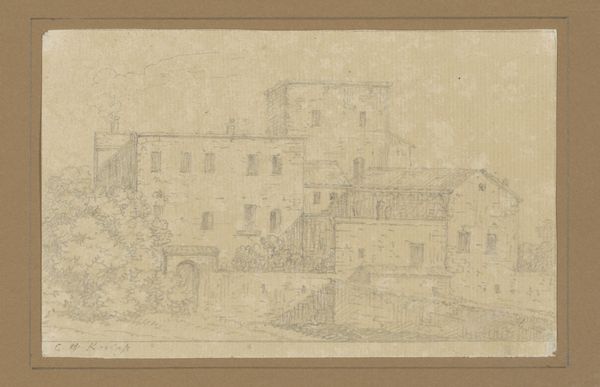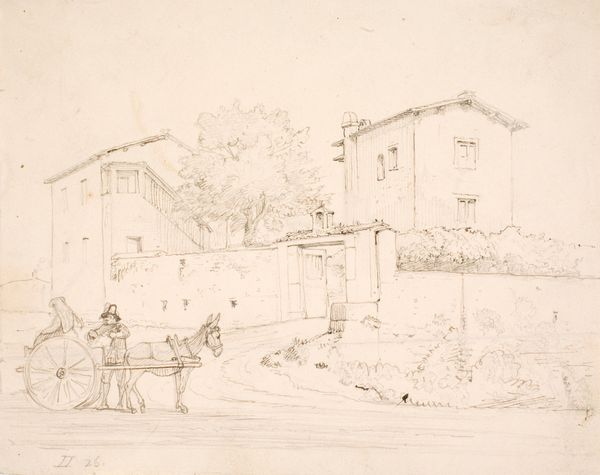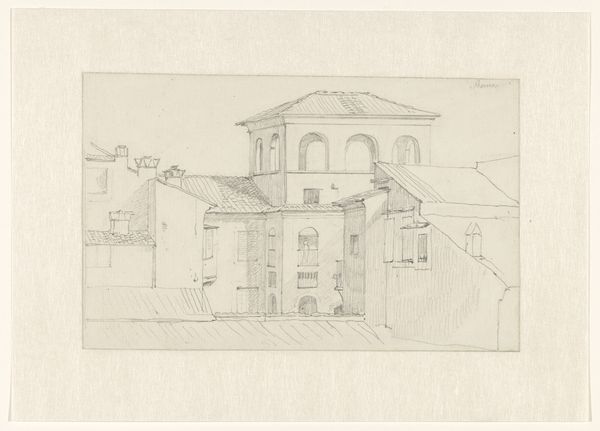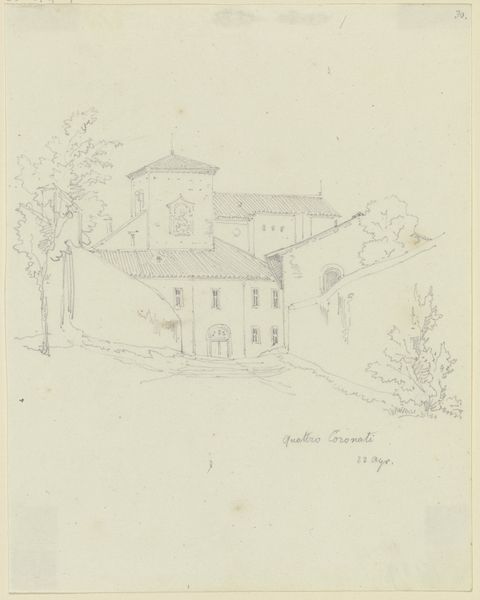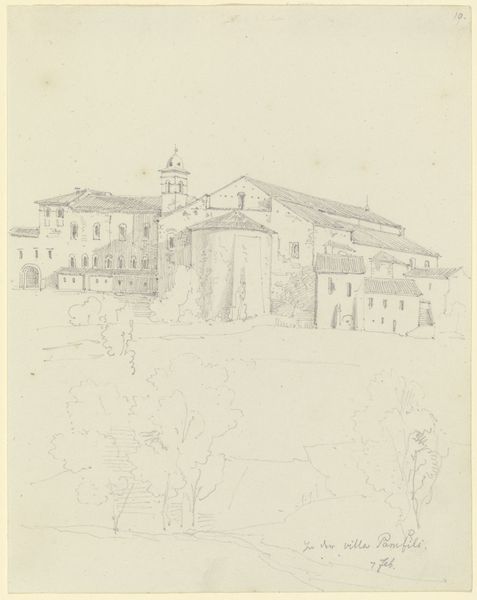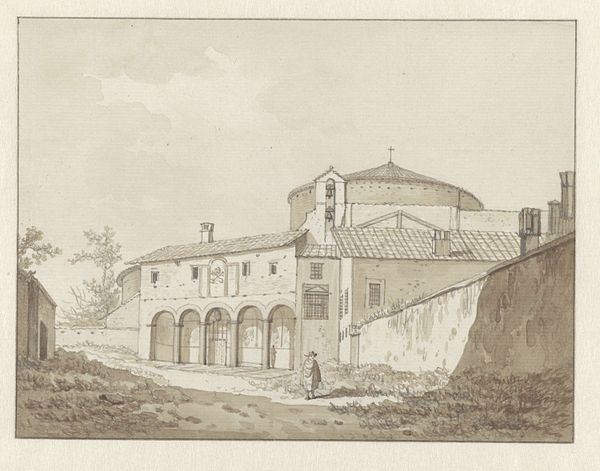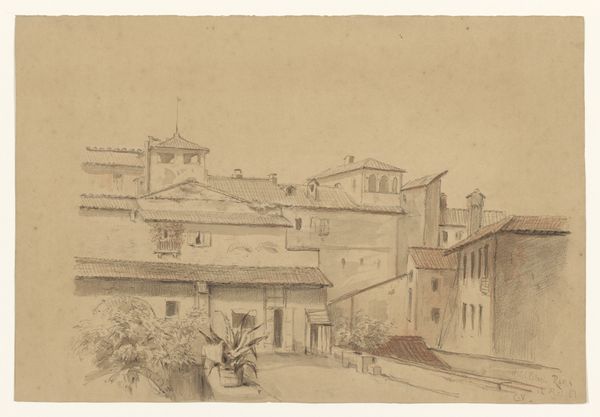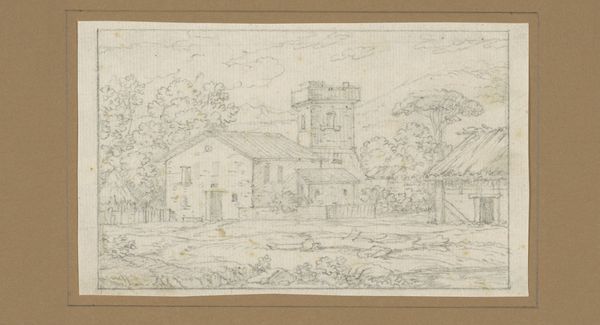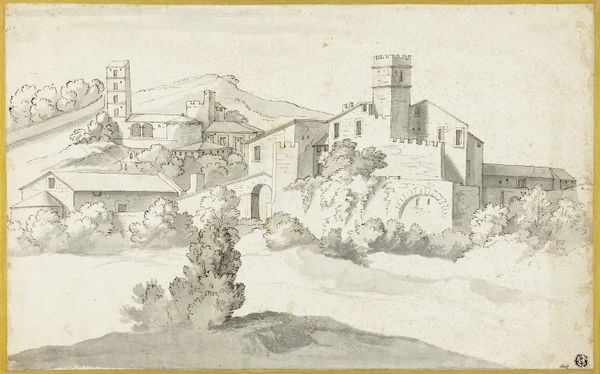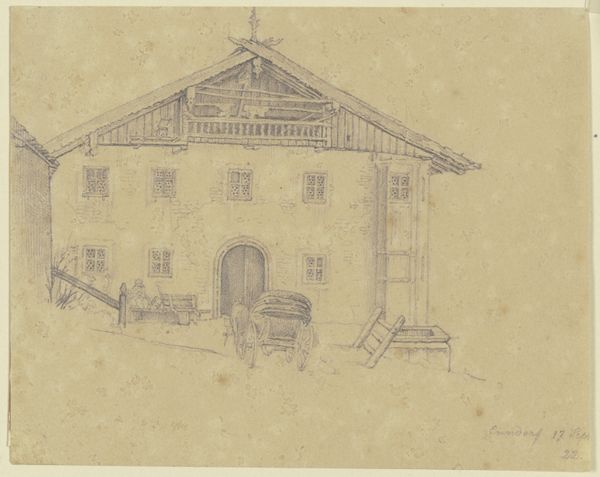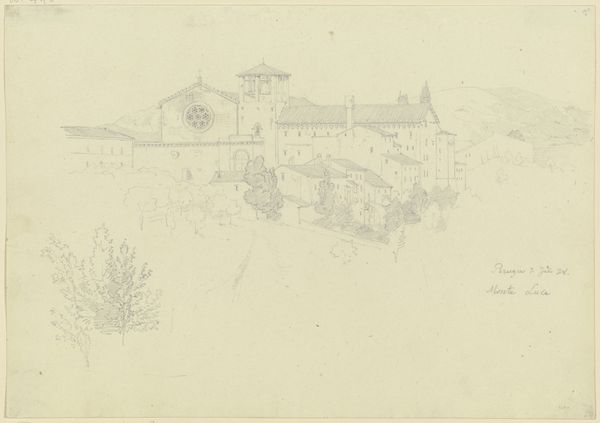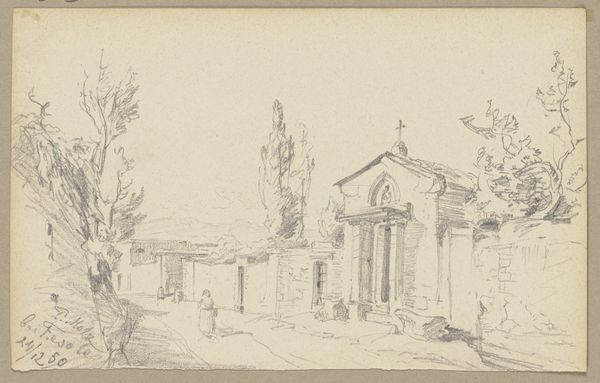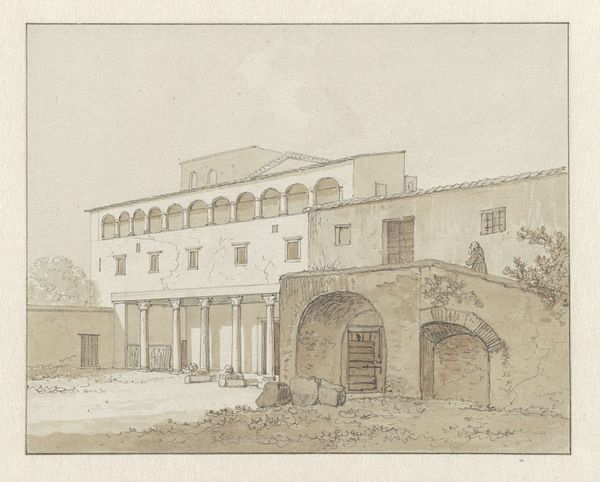
drawing, paper, pencil
#
drawing
#
neoclacissism
#
landscape
#
paper
#
mountain
#
pencil
#
cityscape
#
genre-painting
Dimensions: height 103 mm, width 277 mm
Copyright: Rijks Museum: Open Domain
Editor: This drawing, "Landhuis," by Christoph Heinrich Kniep, was created sometime between 1765 and 1825 using pencil on paper. I’m struck by how the faint pencil lines create such depth and atmosphere, almost dreamlike, despite the architectural precision. What stands out to you? Curator: The piece presents a fascinating study in the interplay of form. Note the horizontality established by the architecture juxtaposed against the verticality of the mountains in the background and the grand tree on the right. How does this structured arrangement guide your eye through the composition? Editor: I think my eye goes from the house in the foreground to the mountains and then gets caught in the tree on the side because it's more detailed. Is the house more important? Curator: That may be a fair interpretation, though it would be worthwhile considering how each area shares equal importance in the way each is rendered. Take note of the texture of the landscape that has the faintest sketch to imply foliage as it approaches the foreground, whereas in the background you barely notice texture at all. Now, analyze how the linear precision of the architecture creates a defined shape that has geometric interest when you start to study the whole picture plane. Editor: I see what you mean about how all the areas are interesting to look at. It also makes me think about neoclassical ideals and their emphasis on clarity. Curator: Precisely! Kniep’s emphasis on the relationships between different shapes and structures, foreground, background, linearity versus the mass, and his measured, almost mathematical approach to landscape, perfectly aligns with neoclassical sensibilities. A work whose geometric forms convey an underlying rationality. What have you learned looking closer at the composition? Editor: That looking at composition tells me more than I initially expected. Now I see all the connections between the different areas instead of only looking at the subject of the work. Curator: Indeed. It prompts a different form of “seeing,” doesn't it? A visual language unto itself.
Comments
No comments
Be the first to comment and join the conversation on the ultimate creative platform.
